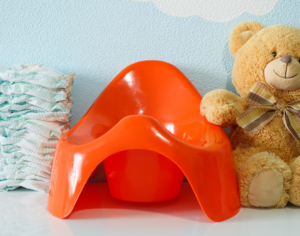Does Your Child Have Too Many Toys?
Is there such a thing as too many toys? Absolutely! While parents, family members, and friends often want to take every opportunity to buy your child a new toy, having too many available toys may lead to children feeling overwhelmed. They may even display a shorter attention span while moving quickly from one toy to the next. Not to mention the horror of your home being completely cluttered with toys!
But how do we get around that? Birthdays and holidays will continue to happen, and what parent hasn’t been swayed by their adorable child pleading with them for a new toy at Target? Here are some suggestions for helping limit toys in the home:
Rotate Them Out
If you have a large family, or even a small one that just LOVES giving gifts, consider holding back some of those gifts and rotating what toys are available to your child. Establish a dedicated toy area, and once a month while your child is sleeping, rotate out some of their toys for newer ones, keeping the old ones out of sight. This gives your child a chance to play with a multitude of toys while still keeping the number of available options low. Bonus points–fewer options mean easier cleanup too!
Plan a Donation Day
Teach your children about donating toys. Plan a day once a year where your children can choose toys to donate to others. Give each child a box–you can control the size–and ask them to fill it up with toys that they’d like to donate. Involve them in the process of choosing and bringing them to the location of your choice.
Ask for the Right Toys
Choosing (and encouraging others to choose) age-appropriate gifts for your child increases the likelihood of your child playing with the toy for more than fifteen minutes before getting bored. Try to choose toys that grow with your child and can be used from a young age. Toys like Magnatiles, dress-up costumes, and outdoor play items like bikes/slides/balls will keep their interest even as they grow up. Try to avoid items that are cheap or flashy as they will often break easily or cause your child to lose interest quickly.
Encourage Experience Gifts
If your child’s loved ones are insisting on frequent gifts for your child, suggest that they offer the gift of time instead. Experience gifts like a trip to the child’s favorite restaurant, a family picnic at the park, or a visit to an amusement park with their cousins will give your child a lifetime of memories! For loved ones who are farther away or can’t participate, suggest a gift card to a restaurant or local museum where you can take your child.
Ask for Disposable Gifts
No matter what you say, there will always be friends and family members who insist that your child needs a physical present to unwrap. In these cases, encourage gifts like art supplies, such as construction paper, crayons, markers, stickers, coloring books, or stamps. These can be played with and disposed of without any tears or drama when they’re done. If your child loves creating works of art and you (or your child) are hesitant to throw them out, invest in a large portfolio where you can keep them, or take photos of them to save. There are even subscription services that will make your art photos into keepsake books!
Another great disposable gift is your child’s favorite food item. What toddler out there wouldn’t be thrilled to get a Costco-sized box of Goldfish crackers or fruit snacks just for them? For older children or teens, consider ingredients for one of their favorite meals (and an offer to cook with them) or a movie-night starter set of microwave popcorn, candy, and their favorite soda….but maybe include a toothbrush with that last one!
Keep It Simple
Be honest here…are you a part of the problem? Do you go overboard with spoiling your children for birthdays and holidays? (No judgment–it happens to the best of us!) Keep yourself in check by following the four-gift approach: something they want, something they need, something to wear, and something to read. This way, your child has gifts to open and things to play with, but the number is controlled and includes useful items as well as just toys.
Plan Ahead
Whatever you choose to do, try to keep a general list of ideas on your phone or in an easily accessible place. The list can include age-appropriate toys, favorite experiences, most loved food items, or needed clothing or school materials. When a friend or relative asks you what to get for Tommy’s birthday next month, you can quickly offer them ideas from the list. Offering suggestions should cut down on the number of items you get that are outside of your preferences!


